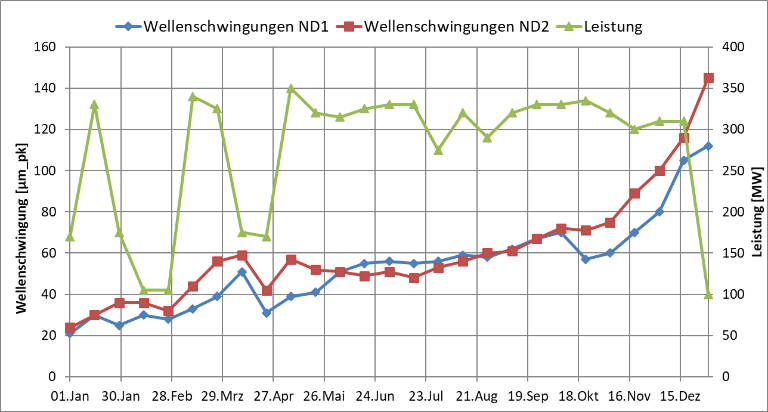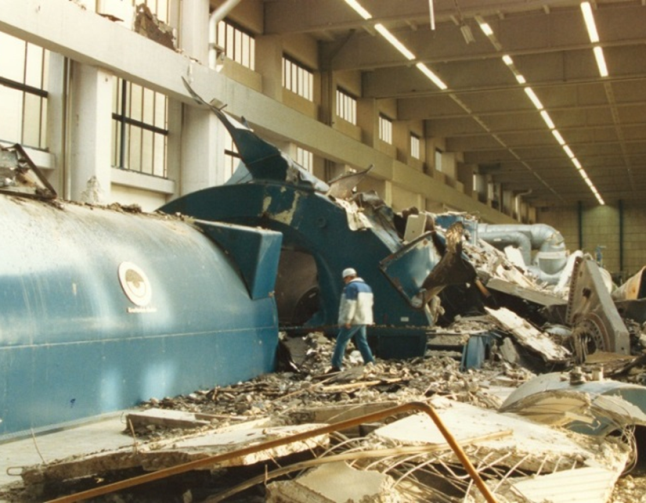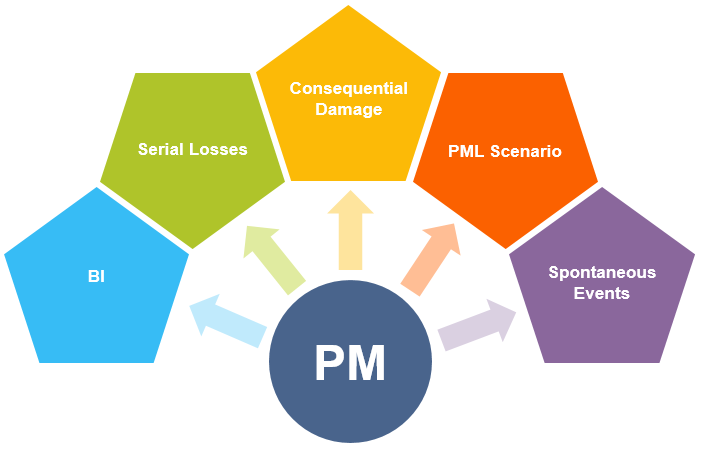Topics at the Allianz Center for Technology:
Predictive Maintenance - Risk Evaluation

- At the industrial insurance congress "AGCS Expert Days 2019", experts discussed the opportunities and risks of Predictive Maintenance.
- Analysis by Allianz Global Corporate & Specialty shows that Predictive Maintenance Systems help to prevent damage to industrial plants. However, they are not a guarantee for avoiding maximum loss events.
- Failures or malfunctions due to misinterpreted data or insufficient data quality have been identified as new risks.
Munich - October 29, 2019 - In the course of industrial networks (Industry 4.0), Predictive Maintenance is making its way into many factories and industrial plants. In the best case scenario, this allows faults to be predicted and maintenance/repair work to be initiated before failures occur. "Predictive Maintenance will help to reduce many smaller property damage claims on machinery, but it is no guarantee against major losses and creates its own risks," explained Hartmut Mai, member of the Board of Management of Allianz Global Corporate & Specialty (AGCS) at the AGCS Expert Days, an engineering conference held by the industrial insurer in Munich.
Detect anomalies automatically
Predictive Maintenance is one of the major new technologies in Industry 4.0 - according to the AGCS Trend Compass, predictive data analysis and automation is one of the most important future technologies across all industrial sectors. Machines and plants are proactively maintained with the help of sensors to keep downtimes low. The main difference to "Condition-based Maintenance", where maintenance is performed based on the condition of components, is the ability to predict the lifetime of machine parts using rule-based models, simulations and artificial neural networks. For this purpose, large amounts of data are collected, stored and analyzed via sensors. The Predictive Maintenance System is designed to automatically detect and interpret anomalies within the machine data. In the best case, this will allow to predict malfunctions before they have negative effects or even failures.
Avoid consequential damage
In an analysis, the Allianz Center for Technology (AZT) at AGCS has taken a thorough look at Predictive Maintenance - and has identified the first concrete effects on opportunities and risks: Predictive Maintenance Systems can help to change technical risks and prevent damage. "In concrete terms, for example, the correct interpretation of vibration characteristics can detect a gradually growing crack in a shaft and, by stopping it in time, prevent a dangerous shaft break with extensive consequential damage," states AZT engineer Thomas Gellermann as an example.

Example of a vibration trend that occurred over a year as a result of a slowly growing shaft crack in a turbine shaft. A catastrophic bursting damage could be prevented by the timely shutdown.
-> Link to White Paper “Predictive Maintenance – Influence on insured Risks”
Reduce the extent of business interruptions
The risk and extent of business interruptions, which according to the Allianz Risk Barometer is the greatest business risk for companies worldwide, can also be reduced by Predictive Maintenance if certain types of faults are detected at the right time and replacement is planned early on without impairing plant availability. "Predictive Maintenance can minimize downtimes and thus save costs, especially in the case of machines and systems for which the manufacturer has not scheduled overhauls or revisions, and where the causes of failure and mechanisms of action are largely known. Wind turbines are a good example of this," explains Gellermann.
-> Link to Topic „Do wind turbines need vibration and condition monitoring?“
Spontaneous events not avoidable
However, the AZT study also shows that when Predictive Maintenance is used, some risks remain unchanged - and new risks can even arise. Above all, possible spontaneous events cannot be prevented despite the new technology, if no measurable effects can be identified in advance: The bursting of the low-pressure turbine shaft at the Irsching power plant on New Year's Eve in 1987, still one of the largest metallic fractures worldwide, could not have been prevented even with Predictive Maintenance, as the triggering part was not monitored. "Even maximum damage events cannot be ruled out due to the modern maintenance method," explains Gellermann. In addition, if revision cycles were to be extended as a result of the new maintenance concept, wear and tear and malfunctions of unmonitored machine parts could not be detected at an early stage.

Spontaneous events, such as this example of a forced rupture of a turbine shaft, cannot be prevented by predictive maintenance
Cyber risiks
A further risk of Predictive Maintenance Systems is the quality of the data collected. Data is equally susceptible to failures or malfunctions or could be manipulated by cyber attacks or acts of sabotage. As a result, data could be misinterpreted or potentially harmful control commands could be initiated.
Evaluate opportunities and risks
"As one of the world's leading industrial insurer, we want to play a part in establishing Predictive Maintenance methods. We are convinced that this new technology-based form of maintenance will sooner or later become more widespread in companies. However, due to the complexity of machinery and the error mechanisms involved, it will not be possible in future to carry out maintenance exclusively based on the predictive model, but maintenance measures will continue to be necessary at fixed intervals.”

Individual assessment of possible impact of Predictive Maintenance on risks (BI-Business Interruption; PML-Possible Maximum Loss)
At the same time, the AGCS wants to raise awareness of the new risks. "Industry and insurers must intensively address the opportunities and risks of maintenance technologies - and cooperate closely with technical providers," says Thomas Meschede, Head of Allianz Risk Consulting in Central and Eastern Europe.
Even when taking Predictive Maintenance into account, the risk assessment must not be made in a blanket way, but requires the assessment of an expert, depending on the application, the optimization goal and the execution. It is important not to abandon critical and proven principles, which serve to protect the machinery, such as separating Predictive Maintenance Systems from the known protective functions of the plant.